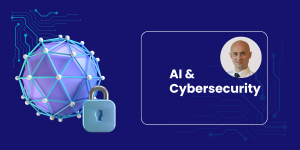AI and Cybersecurity: Navigating the Digital Threat Landscape
In a time when digital systems are the backbone of modern business and cyber threats are becoming increasingly sophisticated, security has become critical for the survival and growth of organizations. That’s why we sat down with an industry expert — Zlatko Apelić, an experienced IT professional with broad technical knowledge across multiple domains and significant experience leading teams of highly skilled engineers. In the following interview, we discuss the role of artificial intelligence in today’s cybersecurity challenges, and what lies ahead in the near future.

- Why is cybersecurity more important today than ever before?
Cybersecurity is essential because it protects digital assets, sensitive data, and critical infrastructure from malicious attacks, data breaches, and operational disruptions. As businesses and governments rely more heavily on digital systems, the risks posed by advanced cyber threats are growing exponentially.
- What specific risks do organizations face in the event of a security breach?
The consequences of a cyber attack can be severe — ranging from financial losses in the millions, to legal liabilities and serious reputational damage for the company or institution involved.
- How does AI influence the development of cyber threats?
Artificial intelligence is used both for defense and attack. We’re increasingly seeing AI-driven threats, including advanced ransomware and phishing campaigns, that continuously evolve and become harder to detect and stop.
- How does digital transformation, including AI and remote work, affect the security landscape?
Digital transformation, along with the growing use of cloud technologies, remote work, and AI integration, has significantly expanded the attack surface. Organizations are more vulnerable because more systems are now exposed online, opening the door to a higher number of potential threats.
- How severe is the shortage of cybersecurity professionals, and why does it matter?
The world is facing a major shortage of cybersecurity professionals — nearly 5 million are currently needed to close the global gap. This lack of skilled personnel presents a serious challenge, as organizations struggle to defend themselves effectively without the right expertise.
- What are the projections for the cybersecurity workforce in the coming years?
Estimates suggest that by 2030, the global talent shortage across all industries could exceed 85 million workers. Cybersecurity is expected to be one of the most affected sectors, driven by rising threats and the slow pace of talent development and training.
- How are regulatory frameworks shaping cybersecurity strategies?
New laws and regulations worldwide are requiring organizations to enhance their cybersecurity posture. This means companies must proactively build resilience and develop security strategies that ensure compliance — not only to avoid penalties and legal consequences, but also to protect their reputation.


